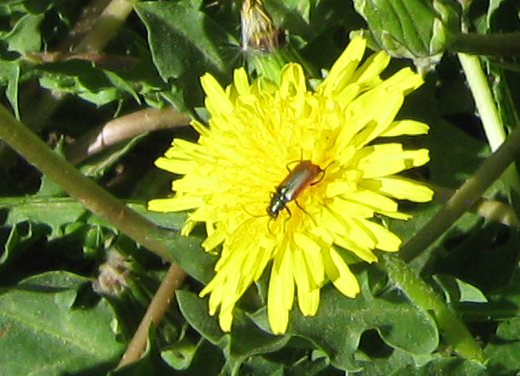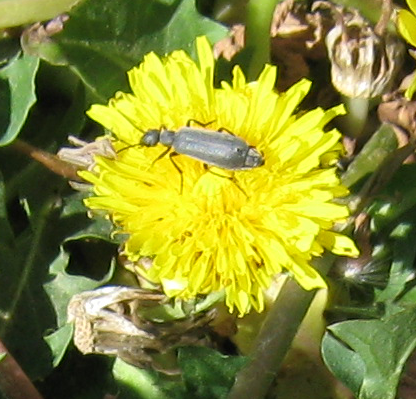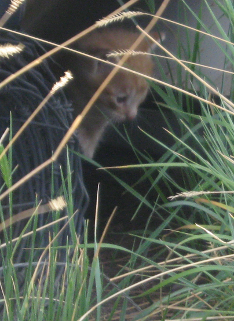Visitors
Content note: This post contains pictures of insects, including beetles, a bee/wasp, and a butterfly. Also, kittens.
There have been a lot of different visitors to my garden and nearby resources. I’ve seen a couple of different bumblebees and what I think was a cabbage white butterfly, but they declined my request for a photo.
I’ve picked a few of these coppery beetles out of my garden, and I think they’re a variety of June beetle, which I grew up calling “June bugs” as they clustered on the window screens on hot summer nights as they tried to get at the lights inside, buzzing loudly as they flew.
I’m not sure what sort of beetles these are:
I’m not sure whether this creature is a kind of wasp, a kind of bee, or a kind of fly. The narrow wings make me think its a wasp/hornet, but it was not aggressive, so I snapped a shot.
This butterfly appears to be some variety of Checkerspot, but I’ve had little luck figuring out which variety in specific. Feel free to suggest possibilities in the comments!
I’m pretty sure this is a deerfly. It might also have been a Harrier jump jet, considering its sillhouette.
There are some feral cats in the neighborhood, and it’s kitten season. The trick is catching them before they turn into buzz saws, and finding them homes. Unfortunately, “buzz saw” usually arrives two or three weeks before “weaned” shows up, and they’re often already tiny fuzzy balls of bitey scratchy pain before we ever see them, but we have managed to catch several over the years to find homes for them where they are neutered or spayed, which helps keep the population down. I wish there was a Trap-Neuter-Release program nearby, so I could get as many of the adult cats spayed or neutered and some basic vaccinations, so there would be fewer kittens and less fighting, but I have not been able to find one. We don’t mind the colony much, since we’re kind of rural, and they keep the mice out of the house, but it’s less than ideal for the cats to spend all summer fighting and breeding and then all winter trying to survive long enough to do it all over again.
Still, there’s a lot about kittens to recommend them…












